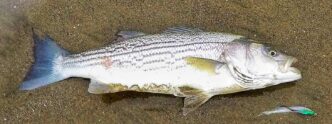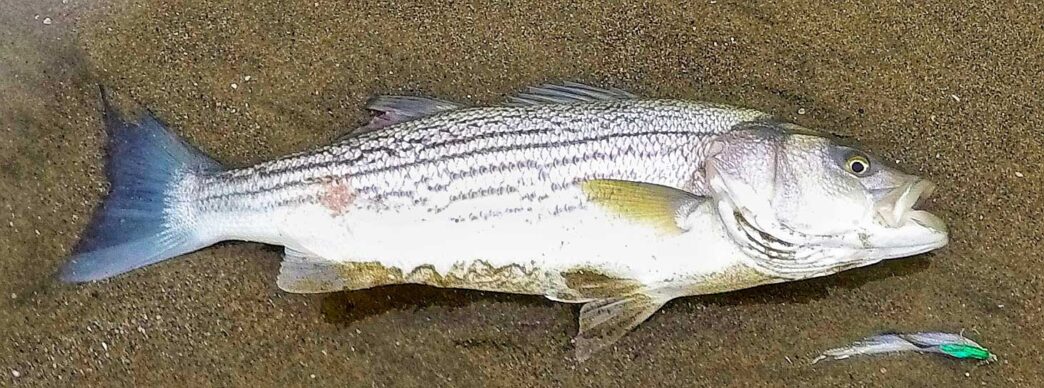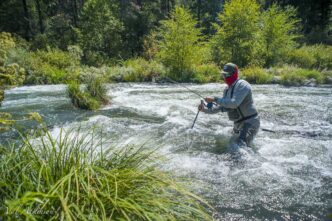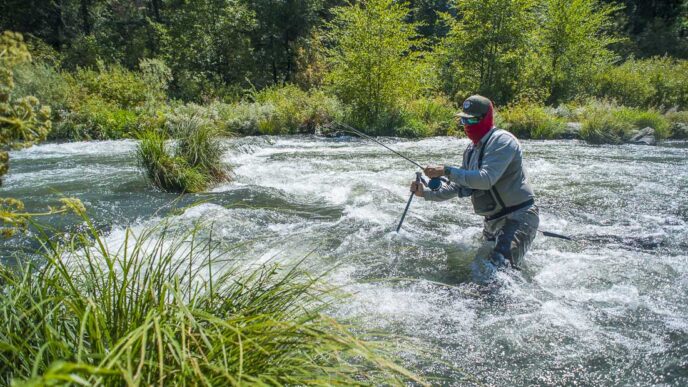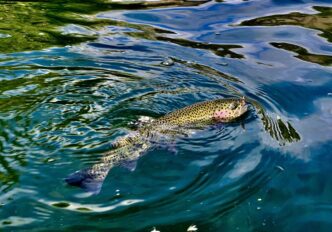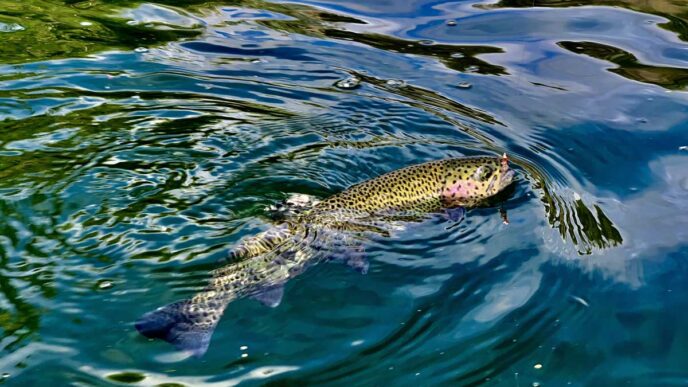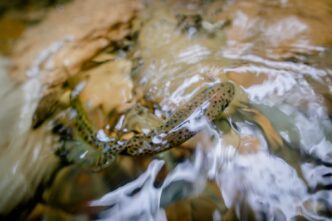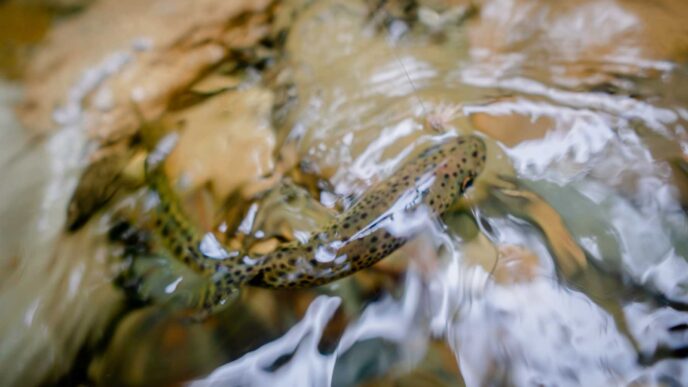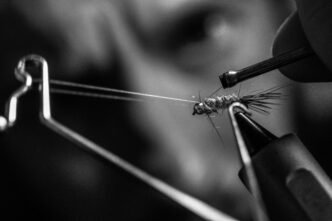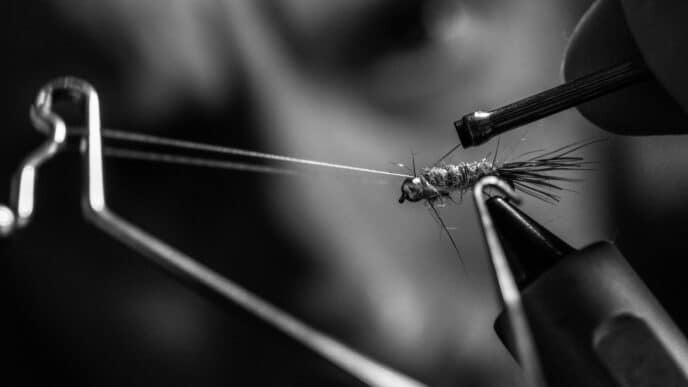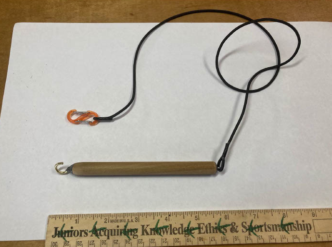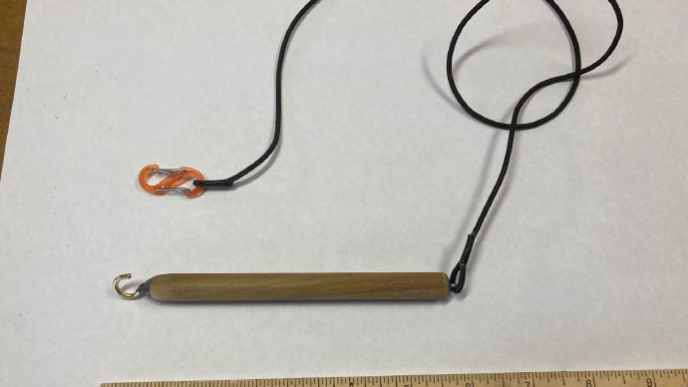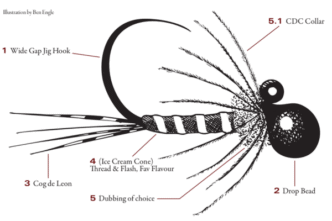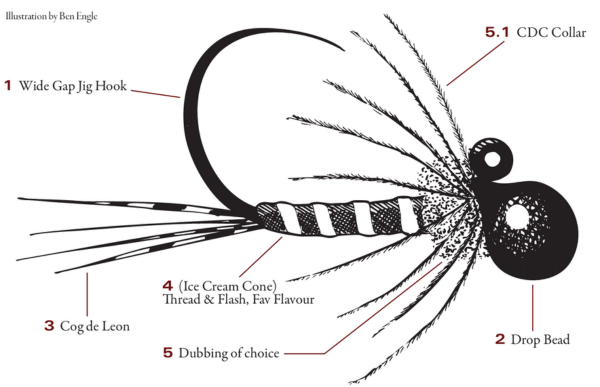While luck certainly plays a role in fly fishing, there’s no question that the more you know about fish and their prey, the better your chances of getting bit. We gain this wisdom from a number of sources, such as magazine articles, books, podcasts, and videos. Guides and knowledgeable friends can also play an important role. There’s another source of information available to anyone with a curious mind and an internet connection.
Scientists have contributed to fly fishing, though you’ll rarely see their findings outside of the academic journals. In the past, you’d need to visit a university library to find their papers. Nowadays, all you need is a smartphone. Over the years, I have found a number of papers in a variety of journals that helped me become a slightly better fly fisher. Here’s an attempt at converting a few of them into “fishing English.”
SCRUFFY NYMPHS
Many folks have found they catch more fish using old, scruffy nymphs. Indeed, some fly fishers deliberately mess up their flies to make them look ragged. A popular argument for the success of disheveled flies is that their loose fibers move in response to currents, making the fly look more alive. Research suggests another reason for their success.
A number of studies have looked at drift-feeding trout and found that they generally prefer larger nymphs, though none of the papers determined if length or width was the dominant factor. So should we tie flies that are longer or fatter? A 2021 paper detailed an impressively thorough study of drift-feeding rainbows and found they preferred wider nymphs. It also discovered that this preference for fatties was most pronounced in larger fish. Whether this is an evolutionary trait or simply the result of wide nymphs being more visible at a greater distance is unclear.
I’ve shot underwater videos of scruffy nymphs (in rivers and lakes) and found their fibers show very little motion, even when viewed at short distances. This makes me think the “looks alive” theory doesn’t hold water. However, the scruffy bodies give these nymphs a thicker profile than svelte newbies, and make them visible from farther away. Another thing that stands out is the way scruffy nymphs trap air in their fibers. This creates a bubble that reflects light, making them more visible. So it seems that tying fatter nymphs or deliberately messing up your regular ones is a good way to catch more and larger fish.
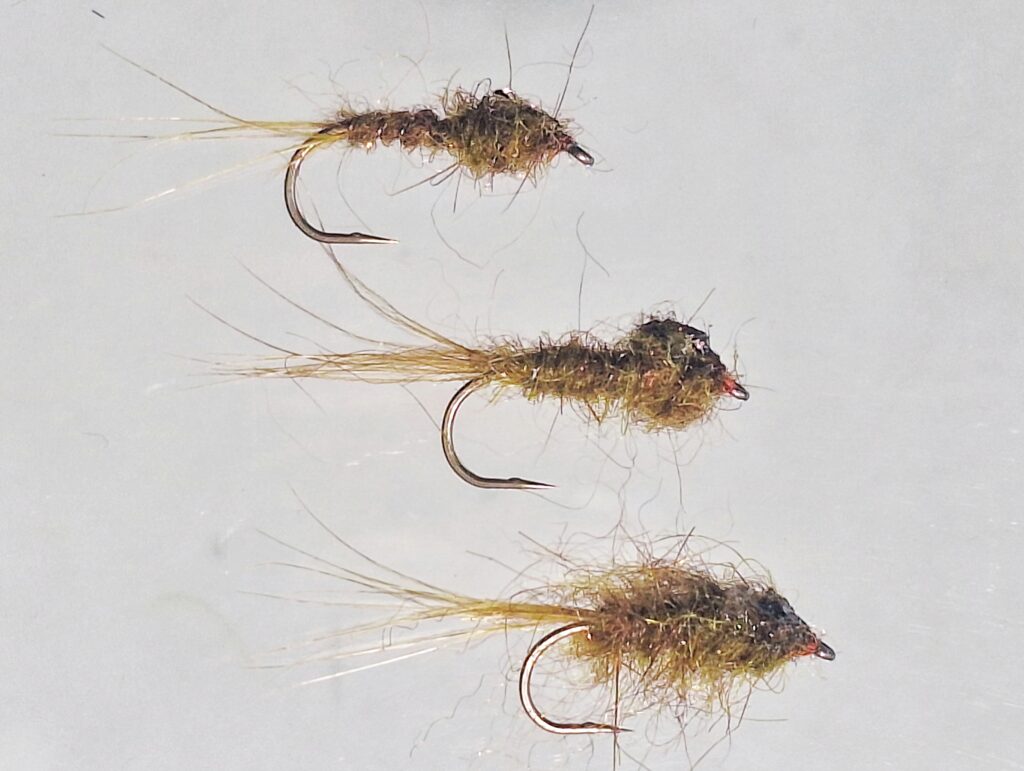
FUSSY FEEDERS
A study examining food choice in rainbows discovered a couple of interesting behaviors. According to the research, rainbows, like humans, have varying tastes which influences what each fish prefers to eat. This might explain the highly frustrating masking hatch situation, where a fish ignores the dominant hatch and feeds on a less numerous insect species. Anyone who has spent a few days fishing dries on waters such as the Fall River or Hat Creek will likely be familiar with this situation.
It’s one of those magical days; you are on the river, the weather is perfect and there’s a prolific hatch of Pale Morning Duns. There’s a nice fish rising steadily along a current seam. You deliver the perfect fly to the right spot, but the fish repeatedly ignores it. Over the next thirty minutes, you lengthen your tippet, change from a paradun to a cripple, and try casting from upstream and downstream. Still no dice. Meanwhile, the fish keeps poking its nose through the surface.
The solution is to stop fishing and watch the fish very closely. In extreme cases, dry fly addicts resort to binoculars or a fine mesh net (guilty on both counts). You have my sympathies if the trout’s taste buds are excited by four-millimeter-long Trico spinners.
Another interesting finding from the study is that rainbows are more likely to consume novel food when they are satiated. This makes some sense from an evolutionary perspective. Having met its basic caloric needs, novel prey might provide essential micronutrients that are limited or lacking in the primary food. It could make sense to try a different type of fly when the fish have dined on a particular hatch for a long time. Perhaps a terrestrial pattern such as a caterpillar, beetle, or hopper following a heavy mayfly or caddis hatch.
GOLDILOCKS STREAMERS
Many fly fishers, especially those who tie flies, have a basic knowledge of entomology. Knowing what insect species live in a body of water and how to match the hatch is an important part of fly fishing. For some reason, few folks put as much effort into streamer fishing.
One factor that can be important in streamer fishing is fly size. As you might imagine, feeding on baitfish usually takes more energy than chowing down on nymphs. A fish that uses more energy chasing baitfish than it gets from eating them won’t gain weight and is less likely to pass its genes onto the next generation. Evolution drives the fish to instinctively feed on baitfish that fall within a certain size range. Like Goldilocks, the fish is less likely to eat prey that is too small or too big.
Studies of several fish species indicate that optimal prey size is between 10 and 20 percent of the predator’s body length. This means a 16-inch brown has an optimal prey size between one and a half inches and three inches long, while a yard-long striper’s size range is from three and a half inches to seven inches. You’ll notice that most of the commercially tied streamers fall within this size range.
Some studies have shown that prey larger than 20 percent is preferentially selected by bigger fish. Studies have found that brown trout will tackle prey up to 40 percent of their body length and largemouth bass have an upper limit of two-thirds! I have landed largemouths on flies that were more than half their body length. If you are determined to land a really big fish, and you can cast big flies, seriously consider using a streamer that is approximately one-quarter to one-third the length of your quarry.
SWITCHNG PREY
Some lakes support more than one species of baitfish, providing predatory fish with two or more choices of food. A study looked at the diet of brown trout in five lakes with populations of two species of baitfish. The researchers found that while bigger browns would occasionally feed on the larger prey species, the smaller species were consistently selected. However, if there was more of one of the baitfish (larger or smaller), the browns fed on that one almost exclusively.
So what are we to make of this information? Fishing a fly that matches the size and appearance of the dominant baitfish population will likely provide the most action. If you are specifically targeting larger browns, use a fly that matches the larger baitfish species.
If you don’t know what species of baitfish are in a lake, the UC Davis California Fish website provides an easy-to-use, map-based solution. For example, most folks know San Luis reservoir holds American shad, but it also holds black crappie, Central California roach, threadfin shad, and wakasagi (smelt).
WELL-FED BASS
If you fish for largemouth or smallmouth bass, you’ll have probably experienced times when the fish attack your fly, but don’t seem interested in eating it. We refer to these events as “short strikes.” You feel a bump, but there’s no hookup. For bass that are sitting on their nests or guarding fry, this is likely a protective behavior. They aren’t interested in eating, they simply want to force an intruder away. But it also happens when the bass are not protecting their young. It’s almost as if the bass are playing with their food.
Researchers used high-speed videos to examine how satiety effected the way largemouth bass attack prey. Bass typically use a short burst of speed to reach their prey, followed by a rapid opening of the mouth that sucks it in. The study found that as the largemouth bass became full, their prey capture rate dropped. The videos showed that the bass changed the way they attacked prey. They still produced the burst of speed but reduced how far they opened their jaw. This reduced the suction volume and velocity, resulting in more of the prey escaping.
This is probably what’s going on when we experience short strikes with bass and some other species. I’d like to report there is a solution to this problem, but I’ve not found anything that makes a big difference. Using a smaller fly can sometimes help, possibly because it requires less suction to enter the fish’s mouth. Another option is to stop your retrieve so the fly appears to be stunned. The fish will sometimes inhale the fly, but there’s no guarantee. If anyone has solved the full fish problem, please let us know.
SILENCE IS GOLDEN
A two-year study by Texas Parks and Wildlife (TPWD) tracked the movement of largemouth bass using radio transmitters. The study’s main findings were interesting, but what really got my attention was their observations on boat noise.
Boat noise has been a topic of discussion among fly fishers for a long time, with many saying that fish respond negatively. In his book Stillwater Fly-Fishing Secrets, Hal Janssen provides a diagram showing how far trout stay away from boats made from different materials. While I can’t verify Hal’s numbers, there have been many times I’ve witnessed rising trout avoiding a boat. I’ve also seen bonefish and tarpon spook when a clumsy fly fisher (me) drops something on the deck.
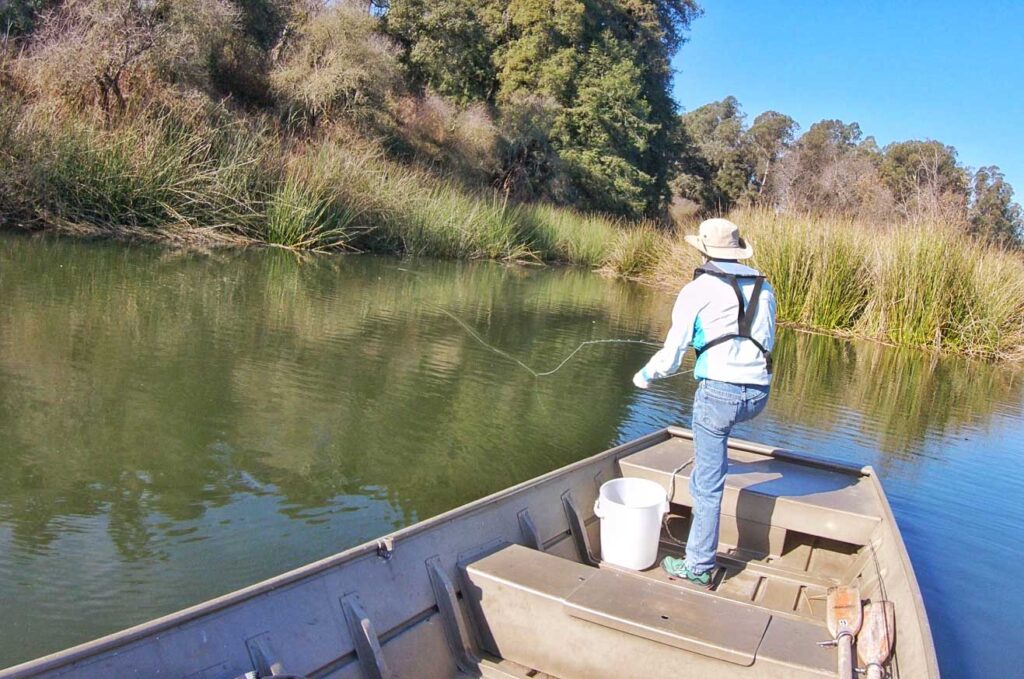
The TPWD study showed that 59 percent of the radio-tagged bass responded to the boat by rapidly moving up to fifty yards away. It’s possible the tagged fish were extra sensitive to boats or sonar pings. However, in a YouTube interview, the lead biologist seemed confident that general boat noise was the cause.
Dropping heavy items onto the deck is an obvious concern, but don’t underestimate how loud seemingly quiet things can be. I have underwater videos (in rivers and lakes) where human conversations can be heard. If you want to optimize your chances, remember to fish by the rule “silence is golden.”
The internet provides instant access to over 160 million academic papers. Don’t worry about technical jargon; most of them provide a short, plain-English abstract. If nothing else, these papers will help you think more critically and creatively about fly fishing, improving your ability to catch fish and deepening your understanding of their watery world.
There’s never been a better time to see (or hear) things from the fish’s point of view.



